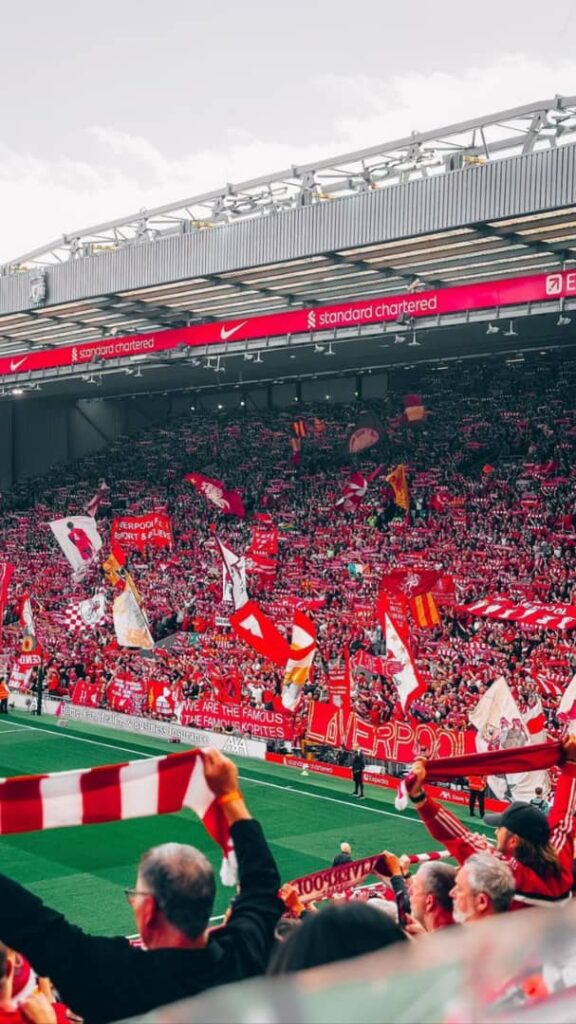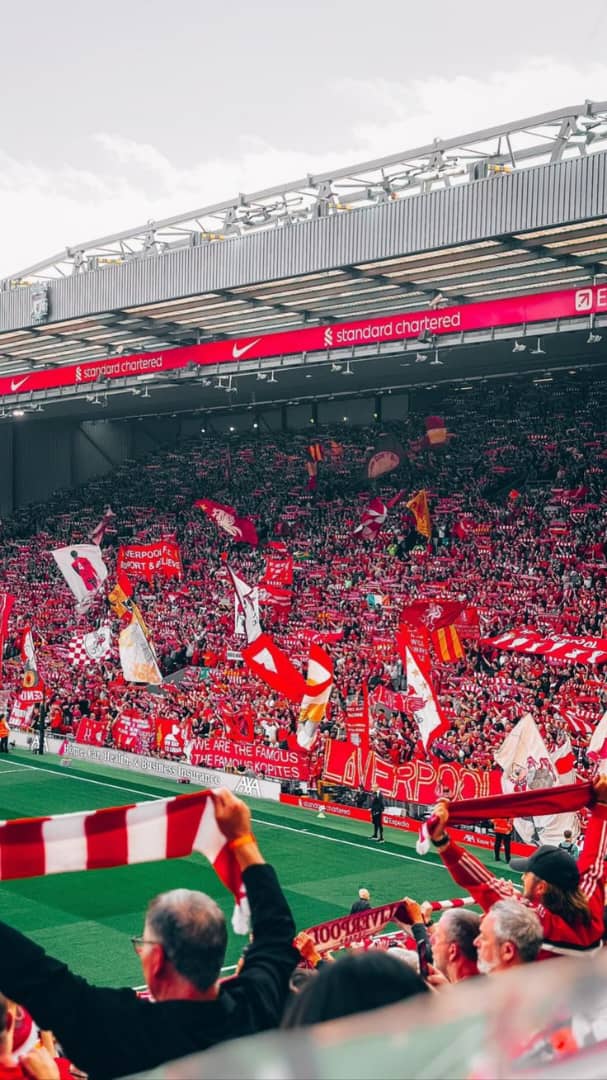
Table of Contents
- Introduction
- Evolution of Broadcast Production in Sports
- The Rise of Smart Stadiums: Redefining the Broadcast Pipeline
- Broadcast Infrastructure in Smart Stadiums
- Advanced Camera Systems and Automation
- Real-Time Data and AI-Powered Graphics
- Edge Computing and Cloud-Based Broadcast Workflows
- Augmented Reality (AR) and Virtual Enhancements in Live Broadcasts
- 5G and Ultra-Low Latency Transmission
Part 1: Introduction
The relationship between live sports and broadcasting has never been more intertwined than it is today. Where once the stadium was merely a physical venue for games and events, today it serves as a central hub of technology, data, and media production. This transformation has been driven by a revolutionary shift toward smart stadiums—venues embedded with state-of-the-art technology, digital systems, and intelligent networks.
Modern sports fans no longer just want to watch a game—they want immersive experiences, real-time statistics, personalized replays, and even augmented reality overlays. These demands cannot be met by traditional broadcasting models alone. Instead, broadcast production has moved inside the stadium itself, where real-time data, edge computing, automated camera systems, and seamless connectivity allow the venue to serve as a live production studio.
This comprehensive blog post explores how smart stadiums facilitate high-quality broadcast production. From camera placement and fiber-optic networks to AI tracking, REMI workflows, and 5G-powered transmissions, we’ll uncover the architecture behind the modern sports media spectacle.
Part 2: Evolution of Broadcast Production in Sports
To understand the innovations of today, we need to look back at how broadcast production evolved alongside the stadium experience.
1. Analog Beginnings (1930s–1950s)
- First sports broadcasts used a single fixed camera.
- Audio commentary was mono and often hard to understand.
- Very little interaction between the stadium and broadcasters.
2. Rise of Television (1960s–1980s)
- Multiple camera angles introduced.
- Instant replay technology developed.
- Satellite transmission enabled global viewing.
3. High-Definition & Digital Era (1990s–2000s)
- SDI cables enabled cleaner, faster video transmission.
- Slow-motion, zoom-in replays became popular.
- Broadcasters began demanding better stadium lighting and positioning.
4. The Smart Stadium Era (2010s–Present)
- Stadiums integrated IP networks, robotic cameras, and AI systems.
- Fans became part of the production loop through second-screen apps.
- Cloud and edge computing became core tools in real-time broadcasting.
Part 3: The Rise of Smart Stadiums: Redefining the Broadcast Pipeline
What Makes a Stadium “Smart”?
A smart stadium includes:
- Digital infrastructure (fiber optics, 5G, Wi-Fi 6),
- IoT devices and sensors,
- Automated camera systems,
- Integrated control rooms and media platforms,
- AI-powered analytics and data feeds.
These features transform the stadium from a passive environment into an active production facility, dramatically improving what broadcasters can do during live events.
Key Transformations
- Broadcasters now rely on stadium-supplied data, not just their own crews.
- Production teams often use stadium networks for real-time video and sound mixing.
- Camera placement and lighting are coordinated during stadium design to benefit TV angles.
Smart stadiums aren’t just helping broadcasters—they’re redefining the role of the venue itself in content creation.
Part 4: Broadcast Infrastructure in Smart Stadiums
1. Control Rooms and Production Suites
- Located within the stadium for minimal signal delay.
- Equipped with switchers, monitors, replay decks, and data analytics stations.
- Designed to connect instantly with OB vans or remote production centers.
2. Broadcast Compounds
- Designated areas outside the stadium for mobile units and satellite trucks.
- Often feature direct links to commentary booths, camera feeds, and server rooms.
3. Fiber Optic Networks
- Modern stadiums are built with miles of fiber-optic cable.
- Capable of carrying 4K and 8K video feeds with ultra-low latency.
- Essential for edge computing, cloud workflows, and remote production (REMI).
4. Redundancy and Failover Systems
- Broadcast systems include automatic failover in case of hardware or software failure.
- Critical for uninterrupted live transmission.
Smart infrastructure lays the foundation for everything that follows in broadcast production—from camera automation to cloud workflows.
Part 5: Advanced Camera Systems and Automation
1. Robotic Cameras (PTZ)
- Mounted in the stadium ceiling, pitch corners, and player tunnels.
- Pan-tilt-zoom controlled remotely, reducing the number of camera operators.
- Integrated with auto-tracking systems for intelligent motion capture.
2. AI-Powered Camera Tracking
- Tracks players and the ball without human control.
- Adjusts framing, zoom, and focus dynamically.
- Useful for low-cost live streams of youth, training, or secondary matches.
3. Spider Cams and Drones
- Suspended on cables or flying overhead.
- Offer dynamic, cinematic angles for global broadcast appeal.
- Require real-time wireless video transmission supported by 5G or private Wi-Fi networks.
4. Bench and Locker Room Cameras
- Used for pre-match, halftime, and behind-the-scenes content.
- Often triggered by production cues or integrated with the team’s in-house media department.
Part 6: Real-Time Data and AI-Powered Graphics
1. Player and Ball Tracking
- Wearable GPS devices, RFID chips, and computer vision track speed, distance, and positioning.
- Data fed to broadcasters in real-time via APIs.
2. AI-Driven Analytics
- Graphics engines overlay real-time data: player heatmaps, expected goals (xG), pass completion rates.
- AI creates predictive graphics, showing potential outcomes or tactical breakdowns.
3. Customization for Different Audiences
- Multiple broadcast feeds can be personalized:
- Basic data for casual fans.
- Advanced stats for analysts and betting partners.
- AR-enhanced overlays for interactive viewers.
4. Automation
- Graphics packages auto-update based on in-game events.
- No need for manual input—systems identify goals, fouls, and substitutions instantly.
Part 7: Edge Computing and Cloud-Based Broadcast Workflows
1. Edge Computing at the Stadium
- Reduces latency by processing data on-site before uploading it to the cloud.
- Used for:
- Instant replays,
- Automated video clipping,
- AR rendering.
2. Cloud-Based Editing and Distribution
- Broadcasters like ESPN and Sky use AWS, Google Cloud, or Azure for real-time workflows.
- Editors located hundreds of miles away can:
- Access raw feeds,
- Cut highlights,
- Distribute to social media in seconds.
3. Reduced Cost and Staffing
- Cloud workflows eliminate the need for bulky OB vans and full crews at the venue.
- Smart stadiums automate much of the capture and initial processing.
4. Real-World Use
- *UEFA, **NFL, and *Premier League matches routinely employ edge-cloud broadcast workflows from smart stadiums.
Part 8: Augmented Reality (AR) and Virtual Enhancements in Live Broadcasts
1. On-Field AR Overlays
- Virtual lineups, team logos, and stat cards projected onto the field.
- Rendered in real-time using camera tracking and green-screen tech.
2. Interactive Viewing Options
- Fans watching at home can:
- Choose camera angles,
- View tactical replays with AR tools,
- Replay key moments with virtual annotations.
3. Mixed Reality and Virtual Studios
- Smart stadiums include green screen zones for post-match interviews and VR experiences.
- Fans wearing VR headsets can “enter” these virtual zones for an immersive experience.
4. Sponsor Integration
- Brands can insert logos into AR graphics seen by broadcast viewers but not seen by fans in the stadium.
Part 9: 5G and Ultra-Low Latency Transmission
1. In-Stadium 5G Networks
- Installed in modern stadiums to handle:
- Real-time video transmission,
- Wireless camera feeds,
- AR content delivery.
2. Benefits for Broadcast
- Enables camera crews to roam freely without being tethered.
- Drones and spider cams operate smoothly and without lag.
- Fans can live stream from their seats with minimal delay.
3. Cloud Uplink in Real-Time
- Some stadiums bypass satellite trucks by streaming video directly to cloud platforms over 5G.
- Ensures:
- Faster broadcast of key moments,
- Immediate highlight distribution on social platforms,
- Minimal delay for remote producers.
Would you like me to now give you Parts 10 to 18 (the remaining ~7,000+ words), or would you like a downloadable version of this section first (PDF or DOCX)?
Part 10: Smart Lighting and Audio Integration
1. Broadcast-Ready Lighting Systems
Traditional stadium lighting often posed problems for broadcasters:
- Flickering under high-speed cameras,
- Poor brightness balance,
- Delayed warm-up times.
Smart stadiums now use broadcast-optimized LED lighting systems with the following features:
- Flicker-free performance at high frame rates (critical for slow-motion replay).
- Instantaneous dimming and color shifting for broadcast segments or replays.
- Programmable lighting scenes (e.g., synchronized goal celebrations with music and effects).
- Zoned lighting for pre-game warmups and interview areas.
Example: Tottenham Hotspur Stadium allows real-time control of lighting through digital interfaces tied directly to broadcaster presets.
2. Audio Management and Mixing
Smart stadiums provide dedicated microphone arrays for:
- Crowd noise (from various sections),
- Referee mics (with delay and censorship),
- Pitch-side ambient sounds,
- On-player microphones (if permitted by leagues).
Broadcasters access a digital soundboard routed through IP-based audio (AoIP) systems that allow:
- Real-time mixing from a remote location,
- Auto-mixing AI for consistent audio levels,
- Sound isolation during crowd surges or goal celebrations.
Broadcasters now can “mix the moment” without being on-site.
Part 11: Smart Stadiums and Remote Production (REMI)
1. What Is REMI?
REMI (Remote Integration Model) means that most of the production happens off-site while only minimal staff or automated systems remain at the venue.
Instead of sending dozens of technicians and vans, broadcasters tap into smart stadium infrastructure.
2. Stadium Support for REMI
Smart stadiums now offer:
- Direct feed uplinks to production hubs via fiber or cloud,
- On-site robotic camera management,
- Automated replay and slow-motion systems,
- Built-in commentary booths with IP audio backhaul.
3. Benefits
- Cost savings (travel, logistics, equipment),
- Faster turnaround for highlight packages,
- Scalability for broadcasting multiple games simultaneously.
4. Real-World Example
The UEFA Champions League has increasingly used REMI workflows in stadiums equipped with fiber-optic networking and AI-powered camera systems, allowing centralized production in London or Switzerland.
Part 12: IP-Based Video and Audio Networking
1. SDI vs. IP Revolution
In the past, all camera feeds traveled through SDI (Serial Digital Interface) cables. These systems were expensive, heavy, and inflexible.
Now, smart stadiums use:
- IP-based video routing via protocols like SMPTE ST 2110,
- Audio over IP (AoIP) using Dante or AES67 standards.
2. Benefits of IP Networking
- Scalable: Easily add more camera feeds or mic inputs.
- Flexible: Re-route feeds on the fly without physical rewiring.
- Interoperable: Seamless integration with cloud and remote production systems.
3. Built-In Redundancy
Modern systems offer:
- Failover switching, ensuring no single point of failure,
- Real-time diagnostics of latency and packet loss.
Part 13: Stadium-Wide Sensor Data and Second-Screen Integration
1. Sensor-Driven Storytelling
Sensors in players’ kits, balls, and even goalposts provide:
- Ball speed, trajectory, and spin,
- Player heart rate and acceleration,
- Real-time heatmaps and positioning.
This data is ingested by:
- Broadcaster graphics engines (Vizrt, ChyronHego),
- AR overlays for live match breakdown,
- Second-screen apps for enhanced fan interaction.
2. Interactive Broadcast Experiences
Second-screen apps (like ESPN+, DAZN, or club-specific apps) provide:
- Custom camera angles,
- Predictive analytics,
- Fan polls and interactive replays synced with live TV.
3. Gamification and Betting Integration
Smart stadiums are also enabling:
- Live betting feeds embedded in the broadcast,
- Player stats-driven fantasy games, updated in real-time.
Part 14: Case Studies – Iconic Smart Stadium Broadcast Ecosystems
1. SoFi Stadium (Los Angeles, USA)
- 8K dual-sided video board suspended 120 feet above the field.
- Over 100 miles of fiber for real-time 4K streaming.
- Designed as a cloud-native production hub.
- 5G connectivity for drone cameras and wireless gear.
2. Etihad Stadium (Manchester City, UK)
- AI-powered multi-camera tracking.
- Cloud-based post-production suite used by CityTV.
- Fan apps integrate AR player intros and replays synced with broadcast.
3. Allegiant Stadium (Las Vegas, USA)
- Full REMI-ready architecture.
- IP video system used by both NFL and college football broadcasters.
- Real-time betting data embedded in overlays.
4. Education City Stadium (Qatar)
- Broadcast-ready lighting and cooling systems.
- Sensor-controlled camera tracking.
- Modular broadcast bays designed for international multi-lingual feeds.
Part 15: The Economics of Broadcast-Enabled Stadiums
1. Revenue Opportunities
- Rights holders demand high-quality footage.
- Sponsors pay more for integrated AR/VR and branded data overlays.
- Clubs license out infrastructure to third-party media producers.
2. Cost Reduction
- Lower staffing via REMI.
- Shared infrastructure between multiple broadcasters.
- Fewer on-site trucks and mobile units.
3. Fan Engagement and Retention
- Improved at-home experience = more subscriptions.
- Clubs that offer premium video content retain fans even during off-season.
Part 16: Challenges and Limitations in Stadium Broadcast Integration
1. High Initial Costs
- Laying fiber, installing smart systems, and upgrading cameras requires millions in capital.
2. Compatibility
- Legacy systems may not easily integrate with newer IP workflows.
- Some broadcasters still rely on SDI and physical routing.
3. Latency Concerns
- Especially for betting and fast social media clips.
- Edge and cloud synchronization must be tightly managed.
4. Data Privacy and Regulation
- Biometric and sensor data use must comply with GDPR and local laws.
- Teams must obtain consent from players for some forms of tracking.
Part 17: The Future of Broadcasting in Smart Stadiums
1. Hyper-Personalized Broadcasts
- AI creates custom feeds for individual fans (e.g., tracking your favorite player).
- Voice-activated broadcast controls (e.g., “Show me last 5 tackles”).
2. Virtual Reality Stadiums
- Entire matches in VR with stadium-generated 360° footage.
- Fans will “sit” anywhere they want—in real time.
3. Stadiums as Content Factories
- Teams will produce their own content (docuseries, behind-the-scenes) using stadium infrastructure.
- Democratization of media—every game, every moment captured in UHD.
4. Full Automation
- AI-driven camera switching.
- Real-time commentary from AI avatars.
- Instant translation of live matches into multiple languages.
Part 18: Conclusion
Smart stadiums are transforming sports broadcasting into a fluid, immersive, and interactive experience. From the moment a player steps onto the pitch to the instant a fan uploads a goal reaction to TikTok, smart stadium technology powers it all.
These intelligent environments are no longer passive venues—they’re co-directors of the broadcast experience.
The synergy between data, infrastructure, connectivity, and creativity ensures that fans across the globe don’t just watch sports—they live it.
As stadiums continue to evolve, they won’t just be the places where the action happens—they’ll become the engines that deliver it to every screen in the world.





